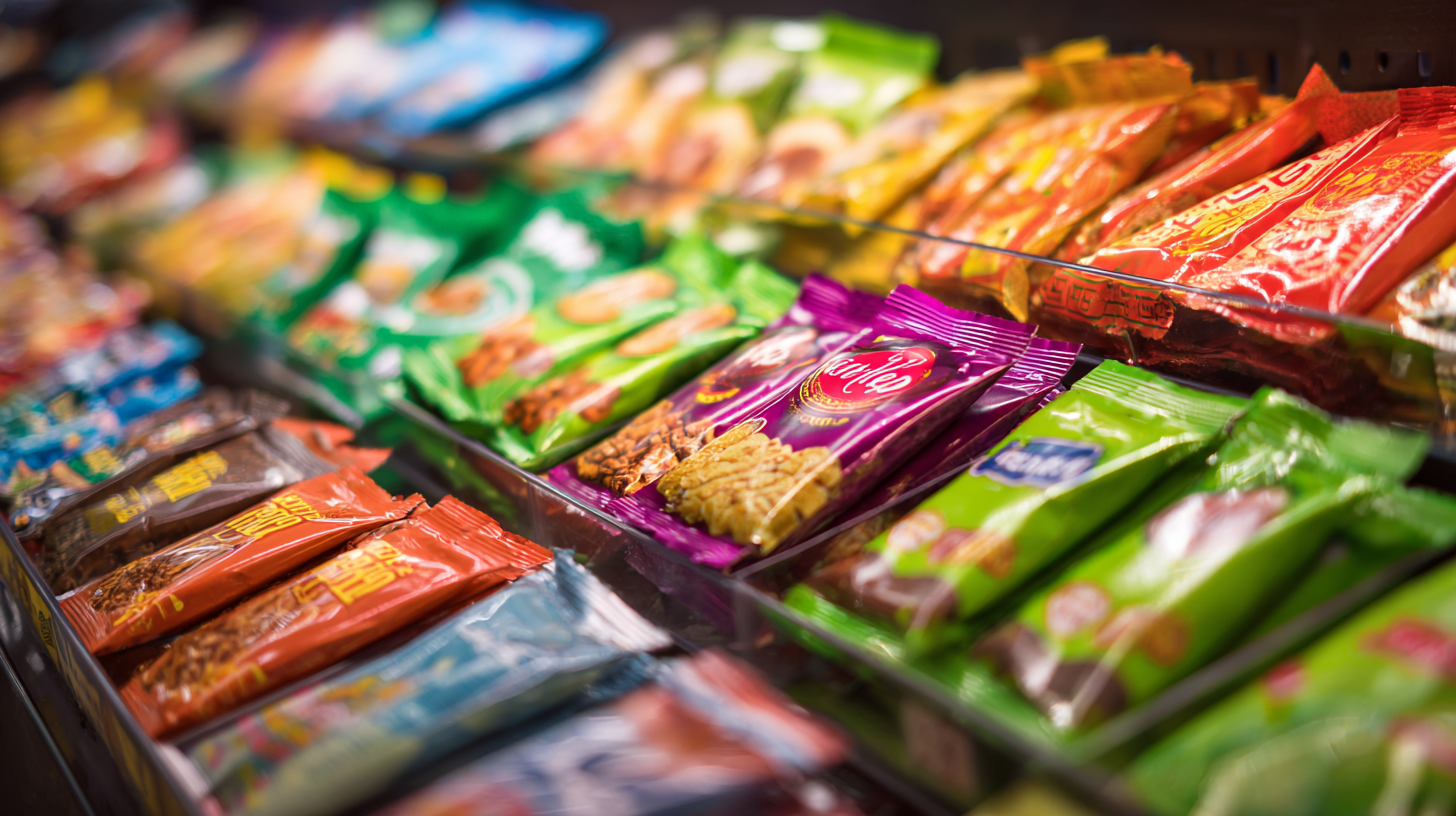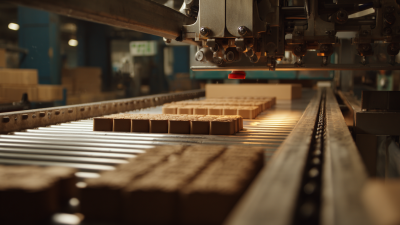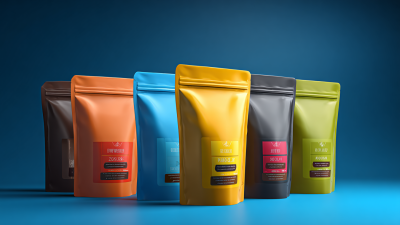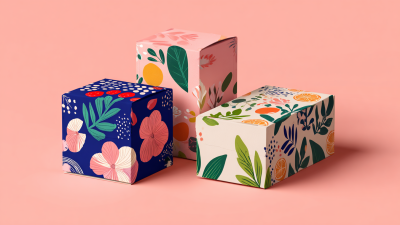- CUSTOM BOXES
- CUSTOM BAGS
- CUSTOM STICKERS
Exploring the Future of Sachet Packaging: Trends Driving Innovation in 2023
As we delve into the future of sachet packaging, it's essential to recognize the transformative trends shaping this dynamic sector in 2023. The global sachet packaging market is projected to reach USD 64.56 billion by 2027, growing at a CAGR of 6.7% from 2020 to 2027, according to a recent market research report by Fortune Business Insights. This growth is driven by increasing consumer demand for convenience and single-serve options, alongside advancements in sustainable materials. Furthermore, innovations in digital printing and smart packaging technologies are enabling brands to enhance consumer engagement and streamline supply chains. As sustainability becomes a core focus, the adoption of eco-friendly sachet solutions is expected to significantly influence market dynamics, positioning sachet packaging as a key player in the broader packaging industry narrative.

Emerging Technologies Shaping Sachet Packaging Design in 2023
In 2023, the sachet packaging industry is witnessing significant transformation driven by emerging technologies. Innovations in materials, such as biodegradable plastics and plant-based alternatives, are redefining packaging solutions to minimize environmental impacts. These advancements not only enhance the shelf-life of products but also align with consumer demands for sustainable options, reflecting a larger trend towards eco-friendly packaging.
Additionally, digitalization plays a crucial role in shaping sachet packaging design this year. The integration of smart technologies enables greater customization and functionality, allowing brands to tailor their sachets for specific market needs. This shift towards personalized packaging solutions enhances consumer engagement and contributes to a competitive edge in the marketplace. As brands focus on reducing plastic waste and improving recyclability, the ongoing development of tech-driven packaging solutions is expected to play a key role in the industry's future.
Sustainability Trends Influencing Eco-Friendly Sachet Solutions
 As the demand for sustainable packaging solutions surges, sachet packaging is undergoing significant transformation. In 2023, companies are embracing eco-friendly materials such as biodegradable films and compostable substances, which not only reduce environmental impact but also resonate with consumers' growing preference for sustainability. This shift is not just about meeting regulatory requirements; it’s also a strategic response to consumer expectations for brands to take responsibility for their ecological footprints.
As the demand for sustainable packaging solutions surges, sachet packaging is undergoing significant transformation. In 2023, companies are embracing eco-friendly materials such as biodegradable films and compostable substances, which not only reduce environmental impact but also resonate with consumers' growing preference for sustainability. This shift is not just about meeting regulatory requirements; it’s also a strategic response to consumer expectations for brands to take responsibility for their ecological footprints.
Tips: To create more sustainable sachets, consider investing in renewable materials like plant-based plastics or recyclable laminates. Additionally, collaborating with suppliers who prioritize sustainability can help streamline your supply chain and promote environmentally friendly practices.
Another trend influencing sachet packaging innovation is the move towards minimalism. Brands are rethinking their packaging designs to eliminate excess materials while ensuring functionality remains intact. This minimalist approach not only enhances brand aesthetics but also reduces waste. By integrating clear labeling and developing refillable solutions, companies can further enhance their sustainability credentials while attracting eco-conscious consumers.
Tips: Incorporate QR codes on sachets that direct consumers to recycling information or refill options, encouraging them to engage with your brand sustainably. This not only adds value but also fosters a community around shared environmental goals.
Consumer Preferences Driving Customization in Sachet Packaging
The world of sachet packaging is evolving rapidly, with consumer preferences playing a pivotal role in driving customization. Today's consumers seek not only convenience but also personalization in their purchasing experiences. From single-serve coffee packets to beauty product samples, the demand for sachets that cater to individual tastes and needs is on the rise. Brands that can quickly adapt their packaging to meet these preferences are more likely to stand out in a crowded marketplace.
**Tips:** Consider conducting surveys or focus groups to gather insights into your target audience's preferences. This data can inform your design choices and help you create sachets that resonate with consumers on a personal level.
Moreover, as sustainability continues to be a dominant theme in consumer choices, eco-friendly sachet packaging options are gaining traction. Brands that prioritize recyclable materials or biodegradable options not only enhance their appeal but also demonstrate a commitment to the environment. Consumers are increasingly loyal to brands that reflect their values, making sustainable innovations in sachet packaging crucial for long-term success.
**Tips:** Explore partnerships with sustainable material suppliers to develop innovative packaging solutions. Highlight these efforts in your marketing to attract environmentally conscious consumers.
Exploring the Future of Sachet Packaging: Trends Driving Innovation in 2023
| Trend | Consumer Preference | Customization Options | Sustainability Focus |
|---|---|---|---|
| Minimalist Designs | Preference for simple, clean packaging | Personalized graphics and designs | Use of eco-friendly materials |
| Stand-Up Pouches | Convenience and shelf visibility | Different sizes for various uses | Recyclable pouch options |
| Smart Packaging | Interest in interactive features | QR codes and NFC technology | Smart materials that indicate freshness |
| Portion Control | Preference for single-serve options | Variety packs and mixed flavors | Sustainable portioning systems |
| Eco-Friendly Materials | Growing awareness of sustainability | Plant-based and biodegradable options | Compostable packaging solutions |
Innovative Materials Revolutionizing the Sachet Packaging Industry
The sachet packaging industry is at a pivotal point in 2023, with innovative materials driving significant changes and enhancements. According to a recent report by Grand View Research, the global sachet packaging market is projected to reach USD 16.4 billion by 2027, fueled primarily by the demand for convenience and single-use products. This growth is largely attributed to advancements in biodegradable and sustainable materials that cater to environmentally conscious consumers. For instance, the introduction of compostable films made from plant-based sources is transforming how brands approach packaging, allowing them to minimize their carbon footprints.

In addition to sustainability, innovations in material technology are also enhancing the functionality of sachets. Flexible barrier materials, which protect contents from moisture, oxygen, and light, are evolving to maintain product integrity over longer periods. A report by Mordor Intelligence highlights that the flexible packaging segment, including sachets, is expected to grow by 4.2% annually through 2025. This growth is driven by the introduction of advanced laminates and multilayer films that not only preserve freshness but also offer improved aesthetics and branding opportunities. As the industry embraces these innovations, sachet packaging is set to redefine consumer experiences, emphasizing both convenience and ecological responsibility.
The Role of Automation in Enhancing Sachet Packaging Efficiency
Automation is playing a crucial role in transforming sachet packaging, enhancing efficiency and reducing operational costs. In 2023, companies are increasingly adopting automated systems to streamline packaging processes, enabling faster production rates and minimizing human error. With advanced machinery capable of high-speed filling and sealing, businesses can produce a larger volume of sachets in less time, meeting the growing consumer demand for convenience and single-use products.
Moreover, automation in sachet packaging facilitates better consistency and quality control. Smart technology integrated into packaging lines allows for real-time monitoring and adjustments, ensuring that each sachet meets stringent quality standards. This not only enhances product integrity but also boosts consumer trust. As companies continue to invest in automation, the future of sachet packaging looks promising, driven by innovations that prioritize efficiency and sustainability while catering to the evolving needs of the market.
Trends Driving Innovation in Sachet Packaging - 2023
Related Posts
-

The Transformative Power of Personalized Packaging Boxes in Elevating Brand Loyalty and Customer Experience
-

Exploring the Future of Box Printing: Innovative Techniques and Eco-Friendly Materials
-

Innovative Stand Up Pouches Transforming Food Packaging with Market Growth Projections
-

Transform Your Brand: Innovative Box Packaging Design Trends You Need to Know